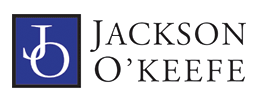The plaintiffs commenced this action seeking underinsured motorist coverage benefits from four insurers, including the…
INSURANCE COVERAGE: Supreme Court reverses the Superior Court’s granting of summary judgment for insurer in a case of first impression, holding that insurer had duty to defend based on the legal uncertainty of coverage

In this action, the homeowner appealed the Superior Court’s decision of summary judgment in favor of insurer. The homeowner brought a direct action against their general contractor’s commercial general liability insurer seeking to recover default judgment in underlying negligence action, the insurer declined to defend. The underlying action alleged property damage resulting from a house that collapsed while being lifted off its foundation. The insurance policy in question contained clauses excluding coverage for damage that occurs to “that particular part of real property on which the insured was working.” The case was brought under the direct-action statute, General Statutes § 38a-321. The homeowner claimed that the trial court erred in granting summary judgment because at the time the insured tendered defense of the underlying action there existed a probability that the complaint alleged liability that was covered under the policy and thus triggered the duty to defend. The insured was defaulted, and judgment entered for $558,007.16. The insurer claimed that two business risk exclusions precluded coverage. Under exclusion k (5), the policy excludes coverage for property damage to ‘‘[t]hat particular part of real property on which you or any contractor or subcontractor working directly or indirectly on your behalf is performing operations, if the ‘property damage’ arises out of those operations ….’’ Under exclusion k (6), the policy excludes coverage for property damage to ‘‘[t]hat particular part of any property that must be restored, repaired or replaced because ‘your work’ was incorrectly performed on it.’’ The Court cited both cases from the United States Court of Appeals Second Circuit and the Washington Supreme Court to conclude that “when no appellate authority of a jurisdiction has interpreted particular policy language, but courts in other jurisdictions have interpreted the same language in a manner that could result in coverage, the legal uncertainty as to how a court might interpret the language may give rise to a duty to defend.” The Court concluded that if there is a possibility of coverage than the duty to defend is triggered. Under these facts the “possibility existed because of legal uncertainty as to the meaning and applicability of exclusions k (5) and (6), which arose from a combination of the following factors: Connecticut law favors a narrow construction of exclusions and requires that ambiguous provisions be construed in favor of the insured, multiple state supreme court and federal court of appeals decisions have interpreted exclusions identical to those in the present case in a manner favorable to the insured, and no Connecticut appellate authority has interpreted exclusions k (5) and (6).” Summary judgment for the insurer was reversed and the case remanded. Nash Street, LLC v. Main Street America Assurance Company, 337 Conn. 1 (2020).


